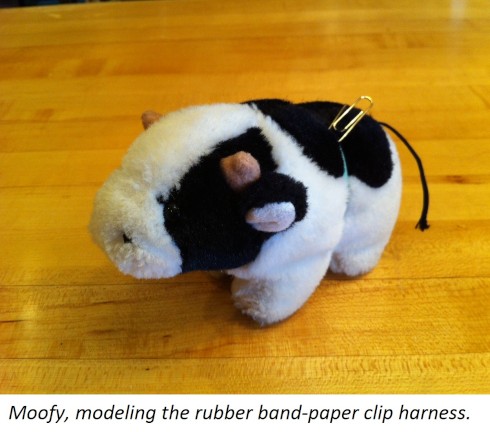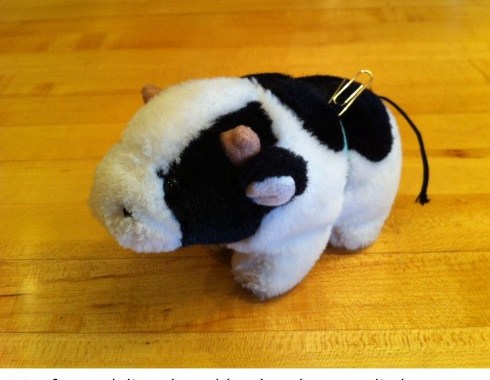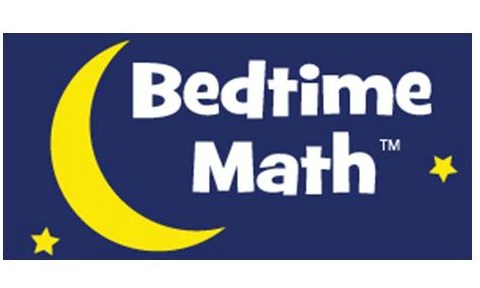The Big Idea
You’re building a stuffed-animal zip line by holding a cord against the wall, hooking a cute stuffed animal onto it, then letting the animal slide down as you time it.
Supplies
15-foot-long blue cords (nylon, cotton, or plastic): 1 for every 4 kids
Protractors: 1 for every 4 kids
Stopwatches or a smartphone timer: 1 for every 4 kids
Daredevil Scorecard: 1 printed for every 4 kids
Paper clips: 1 per kid
Rubber bands: 1 per kid
Masking tape
Measuring tapes: 1 for every 4 kids
Pencils: 1 for every 4 kids
Room Set-up & Other Key Prep
- You’ll need open floor space to stretch multiple zip lines roughly 12 feet out from the wall.
- You’ll also need to tape a cord high on the wall and on the top of a doorframe, so make sure there’s a chair or stepstool to stand on.
- Before the day of the activity, invite the kids to bring in their own small stuffed animals to ride the zip line!
What's the Math?
These activities explore the following math concepts:
- Counting
- Measuring distance
- Measuring time
- Measuring angles
- Basic relationships between variables
- Investigating and finding slope (bonus)
- Division (bonus)
Kickoff Discussion
Ask the kids:
- “Does anyone know what gravity is? (Discuss.) It’s the force that pulls two objects towards each other. In our case, gravity pulls everything down toward the center of the earth. So objects fall till they land on something else. Gravity helps us run fun rides like swings, seesaws, and roller coasters.”
See gravity in action in the SciFri Video: “Plunge Into the Science of BASE Jumping”
- “Does anyone know what a zip line is? (Discuss.) It’s a strong rope stretched from one tree or pole to another, and you hook yourself to the rope and slide down till you reach the ground. It’s an exciting way to fly through the air–has anyone ridden one? If you did, how fast did you go? (Discuss.) Today we’re going to build zip lines for our animal friends!”
Procedure
Activity 1: Practice measuring distance

- To make stuffed animals into zip line animals, wrap a rubber band around as shown, so the two looped ends are above its back. Hook a paper clip through both loops. Now you’re ready to thread the cord through and go!
- Form groups of 4 and spread them out along the walls. Give each group 1 cord, 1 protractor and 1 stopwatch.
- Each group measures out 10 feet of cord with the measuring tape, and wraps a piece of masking tape around it.
- Have each group measure a spot on the wall 3 feet high and mark it with masking tape.
- One team member holds one end of the cord at the 3-foot height, while another holds the 10-foot cord mark to the ground stretched as far as possible.
- Now a third member of each group measures the distance across the floor from the wall to the finish line.
Activity 2: Measure angles and use the zip line

Ask the kids:
- “Does anyone know how a protractor works?” (Discuss.)
- Show how a protractor measures angles, or the slant of one line against another.
- While the cord is held in place, have another group member measure the angle between the ground and the zip line.
- Show how to thread the end of the cord through the paper clip on each animal. Now the animals can ride!
- In each group, while two people hold the zip line, one lets their animal slide—with no starting push!—while a fourth group member times it with a stopwatch.
- Have the kids write down the starting height, the floor distance, the angle of the line, and the time on the Daredevil Scorecard.
Activity 3: How does height affect ride time?
Ask the kids:
- “What do you think will happen to the ride time if you raise or lower the starting height?”
- Let the kids measure other heights on the wall below or above the 3-foot mark.
- Again, one person holds the start end while another holds the 10-foot cord mark taut to the ground. To reach higher points, the kids (or you!) can stand on a chair and tape the cord to the wall, with the animal already looped in.
- Again, the kids measure the floor distance and the angle of the zip line. Then they time the animal’s ride, and on the Daredevil Scorecard they record all the data.
Ask the kids:
- “When your cow or sheep starts higher, what happens to the distance on the floor? What happens to the angle
(Answer: It got bigger! The zip line gets steeper.) - “When your pig or horse starts higher, what happens to the ride time, and why?”
(Answer: The animal rides the same 10-foot length of ride but faster, since it’s at a steeper angle.)
Bonus (optional): Explain that the ratio of the vertical height (up-down) to horizontal distance (left-right) is the “slope” of a line. It’s the height divided by the floor distance (not the diagonal zip line length). We can tilt the same zip line to make different slopes for steeper, more exciting rides!
Activity 4: How does zip line length affect ride time?
To the kids:
- “Now let’s give our animal friends even longer rides!”
- “Will the rides from the same heights take more or less time? Why?” (Discuss.)
- Have each group mark 13 feet on their cords using masking tape.
- Repeat the whole exercise holding the starting end of the rope at the same heights as before, recording results on the Daredevil Scorecard.
Ask the kids:
- “What happened to your angle measurements?”
(Answer: For the same start height they were smaller.) - “What happened to the slope for the same starting height?”
(Answer: It’s shallower since it’s stretched farther on the floor.) - “Do these rides go faster or slower? Why? Were we right?”
(Answer: Each ride should take longer than the 10-foot cord from that same height, since the animals travel farther and slide more slowly due to the shallower slope). - “What would be the fastest way for an animal to get down from 4 feet?”
(Answer: Freefall, straight down–and there are amusement park rides that do that to you!)
For even more Bedtime Math, check out this Ducky Math Problem.
Goodnight Moon, Goodnight Math
What is Bedtime Math?
Bedtime Math’s mission is simple: to make nightly math as common and beloved as the bedtime story. In March 2014 they launch their nationwide free after-school math club, Crazy 8’s, and founder Laura Overdeck’s second book, Bedtime Math 2: This Time It’s Personal. To learn more, visit bedtimemath.org.
Meet the Writer
About Bedtime Math
The nonprofit Bedtime Math aims to make math as beloved for kids as playtime or dessert. To learn more visit www.bedtimemath.org

